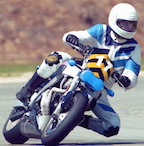As to your prior post #406. Except for one gas gen
Post# of 3605
The engines of any type, as far as I understand, are conversion sets applied to current engines/generators that would be sent to the field as long run units (not temporary or short run units).
The design from GC, is that the cam rotation scheme is changed to run the two CSRV shafts and a specialty in the gas units to rework the spark type and duration. All that would incur redesign of the breathing admittance and exhaust and whether or not there would be any overlap needed. Also I would imagine that the use of diesel or other accelerant would be needed at start up and reduced as heat is gained during run up.
That and the shapes of the CSRV passages would need design and test for creating the correct package for each type of diesel, petrol, gas, propane or other fuel.
To use proper engineering parlance, 'mucho other crap involved'. At least a 20 page white paper.
As for sales details try the other guys and gals here. That is not my pursuit here. I try to stick to the iron stuff or marketing.
As for this post #407..... Yep the test data is old and probably has some diminution in the light of current Tier specs. My feeling is the patent has great latitude for improvement far beyond current or future specs in conjunction with diesel engines. Just my opinion.
As incredible as George Coates has posited, getting the oil out of the valve train (no less getting rid of the damn things altogether) is a huge coup.
The test figures are old and were nearly the best available at the time. Most of it would now be considered a base run set of info (pretty raw at that). My feeling is Allison/Packard built Merlins with K&E log-logs and deci log slide rules and tested with relatively simple rigs.... the engines are still clocking just under 500mph around the pylons.... and they are older than I.
I pray you understand my old fart technical analogies and forgive my ramblings. The money I get from this will buy me a P51... then I will go to my corner with it and be silent.... til the engine starts (Coats valves of course).
 (0)
(0) (0)
(0)